Oral
Neither High nor Low: Mid-Field MRI
ISMRM & ISMRT Annual Meeting & Exhibition • 10-15 May 2025 • Honolulu, Hawai'i

| 15:45 |
Introduction
Matt Hall
|
|
| 15:57 |
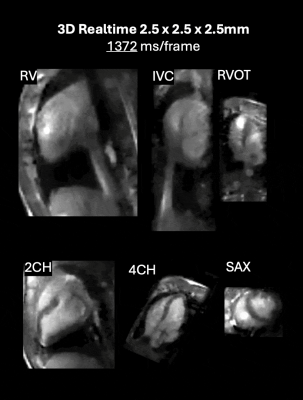 |
0645. Low-latency
real-time 3D imaging for interventional cardiovascular MRI at
0.55T

P. Kumar, R. Ramasawmy, A. Javed, D. Le, K. O'Brien, A.
Jaimes, K. Chow, R. Lederman, K. Nayak, A.
Campbell-Washburn
University of Southern California, Los Angeles, United States
Impact: 3D real-time imaging paired with low-latency
image reconstruction and inline image display offers the
potential to improve device tracking during MRI-guided
cardiac interventions.
|
| 16:09 |
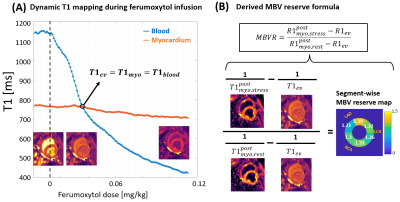 |
0646. A
Practical Approach for Quantification of Stress/Rest Myocardial
Blood Volume Reserve Using Free-breathing Ferumoxytol-enhanced
MRI at 0.55T

H. B. Unal, S. Zeynali, E. Anttila, L. Schepers, R.
Dharmakumar, D. Gross, B. Sharif
Purdue University, Indianapolis, United States
Impact: Proposed approach to estimate myocardial blood
volume reserve appends a minor modification to conventional
ferumoxytol-enhanced T1 reactivity protocol, and enables
estimation of a dose-independent physiological biomarker to
detect ischemia. This helps standardizing normal and
abnormal values in clinical scenarios.
|
| 16:21 |
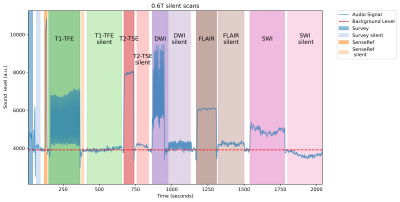 |
0647. Low
acoustic noise scanning at 0.6T
M. Nagtegaal, Y. Dong, A. Webb, M. van Osch
Leiden University Medical Center, Leiden, Netherlands
Impact: We show that acoustic noise at 0.6T can be
reduced to very low levels with a relatively small increase
in scan time and same image quality. This can drastically
improve the patient experience.
|
| 16:33 |
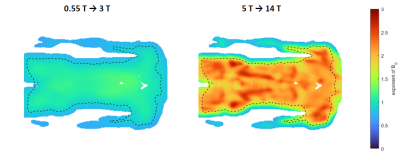 |
0648. Ultimate
intrinsic SNR in the torso of a realistic body model

Y. Wang, M. May, M. Ladd, S. Orzada
German Cancer Research Center (DKFZ), Heidelberg, Germany
Impact: The superlinear increase exponent of uiSNR in
the torso from 5 T to 14 T indicates promising potential for
ultra-high field MRI in the body.
|
| 16:45 |
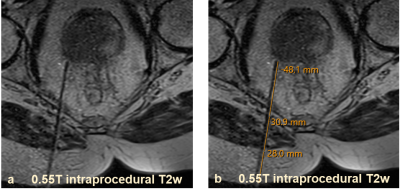 |
0649. Rationale
and Clinical Feasibility of MRI-Guided Percutaneous Transgluteal
Route In-Bore Prostate Biopsy at 0.55T

T. kaur, Y. Jiang, N. Seiberlich, H. Hussain, S. Wells,
J. Wei, E. Caoili, V. Gulani
University of Michigan, Ann Arbor, United States
Impact: Percutaneous transgluteal in-bore MRI-guided
prostate biopsy is effective and offers an
anesthesia-sparing option aligning with existing skills of
CT interventionalists.
|
| 16:57 |
 |
0650. A
Flexible MRI Array based on Direct-3D-Write Technology at 0.55T
F. Muñoz, H. Stark, T. Le, K. Nayak, Y. Khan
University of Southern California, Los Angeles, United States
Impact: Flexible MRI receiver arrays, created using
3D-write technology, can be made to conform to the target
imaging anatomy while also offering scalability, low cost,
and quick manufacturing. They are conductive enough to
provide adequate SNR for effective parallel imaging.
|
| 17:09 |
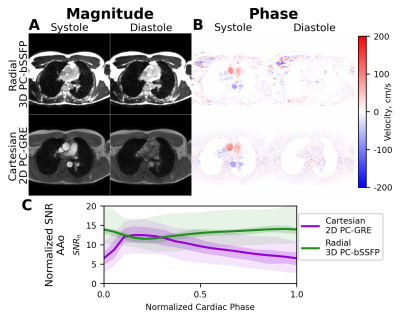 |
0651. Radial
PC-bSSFP 4D Flow MRI at 0.6T
C. McGrath, V. Vousten, P. Dirix, J. Smink, E. Ercan, P.
Börnert, S. Kozerke
University and ETH Zurich, Zurich, Switzerland
Impact: Referenceless radial cine 3D phase-contrast
balanced steady-state free precession (PC-bSSFP) enables
simultaneous full coverage cine images and flow
quantification during free-breathing. This method is
particularly well suited for lower-field systems, taking
advantage of relaxed sequence restrictions at lower field
strengths.
|
| 17:21 |
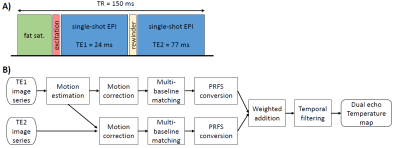 |
0652. Double-Echo
Single-Shot EPI for Improved MR-thermometry in the Liver at
0.55T
R. Mooiweer, R. Tomi-Tricot, A. Krafft, W. Majeed, R.
Razavi, R. Neji, S. Roujol
King's College London, London, United Kingdom
Impact: Low-field MRI shows promises for image-guided
therapies such as HIFU of the liver. The proposed
double-echo single-shot EPI MR-thermometry sequence improved
the precision of MR-thermometry in the liver at 0.55T while
maintaining a high framerate.
|
| 17:33 |
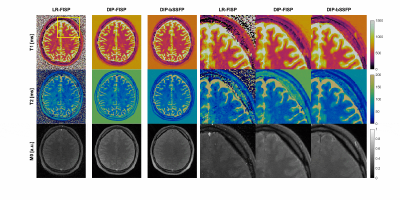 |
0653. Accelerating
3D High-Resolution Brain MR Fingerprinting at 0.55T: Balanced
Free-Precession meets Deep Learning
R. Rizzo, Z. Liu, J. Fajardo Freites, T. Griesler, J.
Hamilton, Y. Jiang, N. Seiberlich
University of Michigan, Ann Arbor, United States
Impact: MRF-bSSFP with DIP reconstruction enables fast
high-resolution 3D quantitative T1 and T2 mapping at 0.55T
in 3:50min, thus potentially enabling fast synthetic
generation of contrast images with good noise suppression
and delineation of fine structures.
|
The International Society for Magnetic Resonance in Medicine is accredited by the Accreditation Council for Continuing Medical Education to provide continuing medical education for physicians.